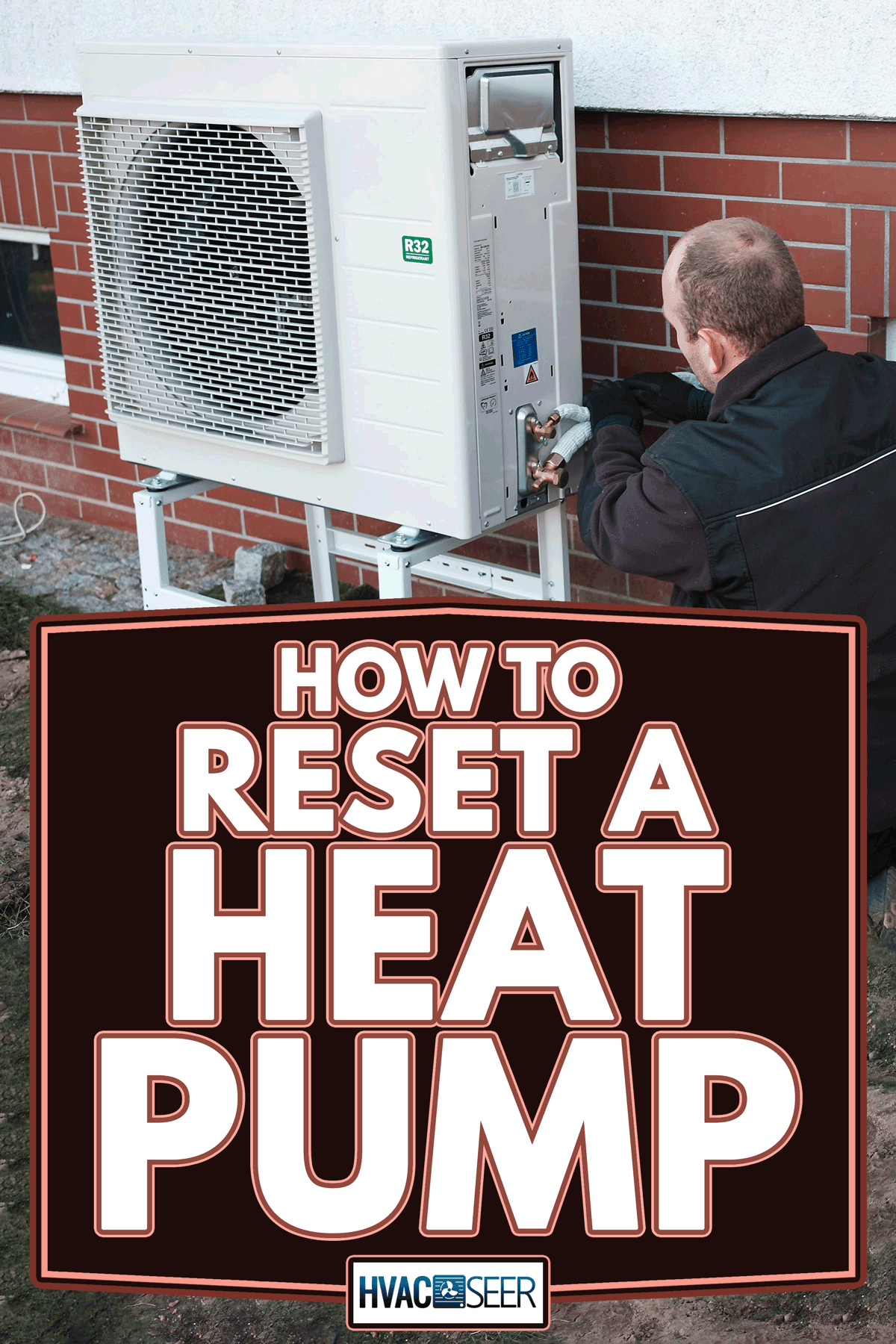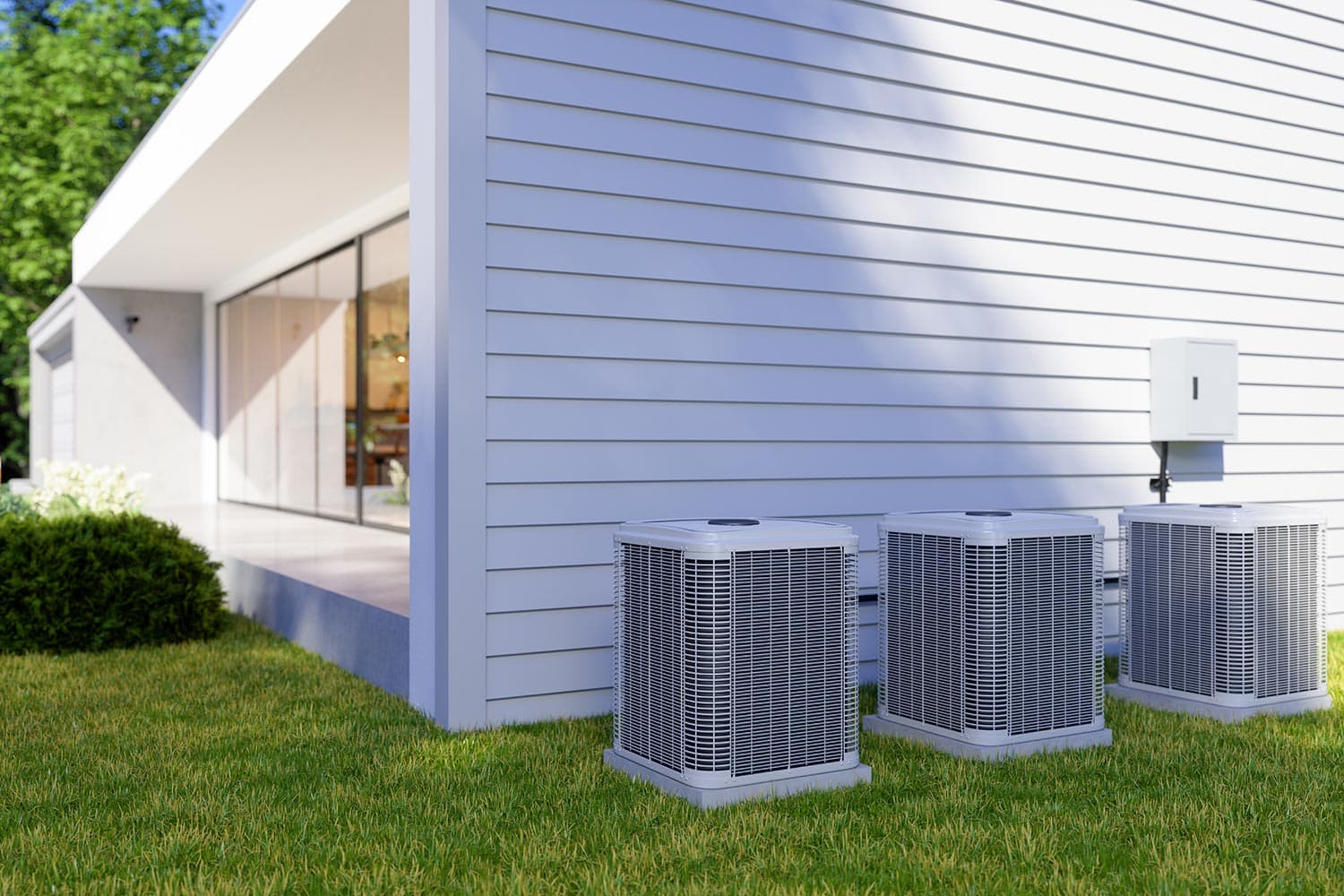Heat pumps are known to transfer heat from a cool environment to a warm environment. While these heat pumps are efficient and convenient, they are vulnerable to wear and tear like any other system. You may want to reset your heat pump but still are wondering how to go about it. Luckily, we consulted experts in this field, and here's what they have to say.
Resetting a heat pump can be easy and also difficult, depending on the problem that prompted the reset. You may need to reset a heat pump when it displays a yellow or red light. Here are the step-by-step procedures for resetting a heat pump:
- Turn off the thermostat.
- Check the power supply.
- Turn off the heat pump's power switch.
- Turn off the heat pump's circuit breakers.
- Switch everything back on.
You should try to discover why your heat pump is shutting down before resetting it. Keep reading to get detailed information on how to reset a heat pump.

Resetting A Heat Pump
Resetting a heat pump is always an option if the need arises. Troubleshooting is essential before a reset. It helps determine the kind of problem the heat pump has and what might be causing it. Many things can be wrong with a heat pump system.
During both the troubleshooting and resetting process, the user's manual or instructions can be helpful. You can save money by resetting your heat pump by yourself, but you may need an HVAC professional if the problem that led to the reset is complicated. Follow these steps to reset a heat pump:
Step 1: Turn Off The Thermostat
When resetting a heat pump, the first step you should take is to reset the thermostat. Check the thermostat settings and try adjusting them. The touchscreen interface of the thermostat in some models allows you to accomplish this.
Step 2: Check The Power Supply
If you notice that your heat pump is not in working order, consider if it has a good power supply. It could be that the power switch was mistakenly turned off, interrupting the pump's power.
Step 3: Turn Off The Heat Pump's Power Switch
Locate the power switch of the pump. In most heat pumps, the control switch is located on either the edge of the heat pump or on the wall beside the heat pump. Turn it off by flipping the switch.
Step 4: Turn Off the Heat Pump's Circuit Breakers
Find the circuit breakers that control your heat pump. Breakers are typically used in pairs in heat pump systems. The first one goes to the indoor unit, while the second one goes to the outdoor unit. Make sure both are turned off, and then wait for three to five minutes.
Step 5: Switch Everything Back On
After waiting for a few minutes, turn on the electrical breakers, the power switch, and the thermostat. It could take the heat pump up to a minute or two to start working after being turned on.

Do Heat Pumps Have Reset Button?
Heat pumps come with a reset button. But there are some that do not have manual reset buttons. Manufacturers remove the reset button in some models to discourage homeowners from pressing the red button too frequently. You can reset systems without the button by using the power switch and circuit breaker.
Where Is The Reset Button On A Heat Pump?
The reset button on your heat pump is easy to locate with the assistance of the user's manual. The reset button of a heat pump is typically located on the outside unit. The reset button is red in color and has two wires sticking out from the top of it.
Manufacturers like Rheem and Ruud place their reset button close to the base of the outdoor unit. These companies make high-pressure reset buttons, meaning the pump goes off, so further damageswill be avoided.
How Long Does It Take For A Heat Pump To Reset?
Resetting a heat pump can be straightforward and challenging. You can reset the system by turning off the thermostat or the circuit breaker that controls it. The entire process of resetting a heat pump may take approximately 15 minutes.

What Would Cause A Heat Pump To Stop Working?
The breakdown of heat pumps brings discomfort to homeowners since they rely on the system to keep their homes cool during hot weather. Many factors could cause a heat pump to stop working, some of which include:
Faulty Thermostat
The work of a thermostat is to send information regarding the temperature the pump is supposed to maintain. If the thermostat stops getting power, communication will be interrupted. This will make your heat pump not turn on.
Dirty Filter

The heat pump needs constant clean air to work properly. If you have a dirty or clogged air filter, enough air fails to pass through. With this, your heat pump needs to do extra work so the set temperature can be maintained. It is better to clean or change your air filter often.
You should do the cleaning every two weeks, while the replacement should be done every three to four months. You can wash the filters with soapy water but always let them dry before fixing them back.
Bad Compressor Contractor
A contractor's work is to control electricity flow to the heat pump and its components. If your compressor contractor becomes faulty, this may cause the pump to run constantly. You should consult a professional to detect if your compressor contactor is damaged and needs replacement or not.
Faulty Reversing Valve
The role of a reversing valve is to allow your heat pump cool and heat your space. When the reversing valve gets bad, your system may be able to come on in the heating mode and not cooling mode or cooling mode and not heating mode. You should contact an HVAC professional if your heat pump starts turning on for heating or cooling mode.
How Do I Know If My Heat Pump Fuse Is Blown?

It is not difficult to check a fuse. It is better to be sure that you are addressing the right issue before you head out to get a new fuse so you do not waste your time or money. To know if your heat pump fuse is blown make sure all of the energy that is running to your unit is turned off.
Some fuses have a glass display window with a metal bar running through its middle. Some plastic fuses have similar wires, but they are hidden, so they can only be seen when you look closely from the side. It is possible to determine whether or not a fuse is blown by just looking at the wire.
You can also use a multimeter to determine whether your fuse is blown or not. This can be done by examining the resistance. If a fuse is in working order, its resistance will be close to zero ohms, but there will be no reading if it has blown.
When you check the fuse in your heat pump, you can tell if it needs replacement. Always make sure that the wattage ratings remain the same as before. You can replace the fuse by following the instructions in the owner's manual that came with your system.
Do Heat Pumps Require Frequent Reset?

You don't need to reset your heat pump unless the need arises. If your heat pump comes with LED lights, the presence of a yellow or red light is a sign that you need to reset your heat pump. The protection circuit breaker in your heat pump will typically need to be reset if it has been tripped, as this is the common reason why a heat pump unit needs a reset. This takes place following a power outage.
To Wrap Up
You should always identify the problem that brings about the need for a reset and the likely cause. You can reset your heat pump by turning off the thermostat, the heat pump's power switch, and circuit breakers. Then turn them back on after some time. However, resetting may not be enough to fix some problems with heat pumps. In such cases, you should contact a technician for help.
If you enjoyed reading this post, here are similar articles you may like:
What Size Generator To Run A Heat Pump?
